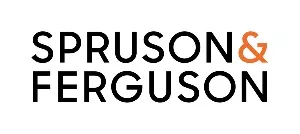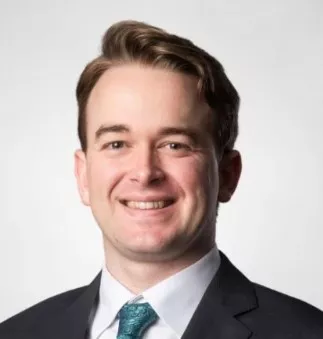- within Privacy and Corporate/Commercial Law topic(s)
- with Senior Company Executives, HR and Finance and Tax Executives
- with readers working within the Banking & Credit, Healthcare and Law Firm industries
After several years of litigation, the fate of two patents owned by Bayer Intellectual Property GmbH (Bayer) covering dosages and uses of rivaroxaban has culminated in revocation and a refusal of special leave to appeal to the High Court.
This case marks a significant setback for Bayer, as Xarelto® (an anticoagulant medication incorporating rivaroxaban) is one of Bayer's top selling products, generating US$4.1 Billion dollars in global revenue in 2023.
This dispute has been ongoing since 2023, when Sandoz AG and Sandoz Pty Ltd (jointly Sandoz) proactively challenged the validity of Bayer's two Australian patents to clear the way for the launch of its three generic rivaroxaban products.
In this article, we step through the seesawing judgments that led to this final outcome in Sandoz's favour and discuss the implications for both patentees and generics contesting inventive step with respect to pharmaceutical patents subject to both the pre- and post- "Raising the Bar" forms of Australia's Patents Act 1990 (Cth) (the Patents Act). As outlined below, the reasoning of the Full Federal Court illustrates the increased challenges for pharmaceutical patentees in defending inventive step challenges with respect to second and third generation patents.
Background
Relevant Patents
Both of Bayer's patents in suit were "second-generation" patents directed to dosages and uses of rivaroxaban, rather than to rivaroxaban itself:
- AU2004305226 (the '226 patent), directed to orally administrable pharmaceutical compositions comprising rivaroxaban and the use of those pharmaceutical compositions for the prophylaxis and/or treatment of thromboembolic disease.
- AU2006208613 (the '613 patent), directed to methods of treating thromboembolic disorders by once daily administration of a rapid-release tablet comprising rivaroxaban.
Rivaroxaban itself is disclosed and claimed in an earlier Bayer patent application, being WO2001/47919 (WO'919) which entered the national phase in Australia and was granted as AU2001028414 ('414 patent) and expired on 24 November 2023, after an extended term of 25 years. Sandoz did not challenge the validity of the '414 patent, which expired before the date on which it intended to launch its generic rivaroxaban products – adopting a common strategy of generic pharmaceutical products of taking steps towards generic product launch in the final years of the compound patent term while being prepared to challenge later-generation patents relating to formulations, methods of treatment and/or manufacturing processes.
Relevant legislation
As examination was requested for both the '226 and '613 patents before 15 April 2013, the applicable legislation was the Patents Act as it existed before the Intellectual Property Laws Amendment (Raising the Bar) Act 2012 (Cth) (RtB).
Timeline
Three substantive decisions have been delivered by the Federal Court of Australia in this dispute: the primary judgment of Rofe J (Sandoz AG v Bayer Intellectual Property GmbH [2023] FCA 1321), the Full Court judgment of Yates, Burley and Downes JJ (Sandoz AG v Bayer Intellectual Property GmbH [2024] FCAFC 135) and the refusal of special leave to appeal to the High Court.
- The primary judgment was handed down by Rofe J on 2 November 2023 and broadly fell in favour of Bayer, finding both patents to be valid and that claims 3 and 4 of the '613 patent were threatened to be infringed by Sandoz's intended activities.
- Sandoz appealed Rofe J's decision to the Full Court of the Federal Court, where Yates, Burley and Downes JJ overturned the primary judgment on 23 October 2024, finding the claims of both patents to be invalid for lack of inventive step.
- Bayer subsequently filed an application for special leave to appeal to the High Court on 27 November 2024, seeking to appeal the whole of the Full Federal Court judgment, which was refused with costs on 6 March 2025 (without any hearing or published reasons).
Bayer's application for Special Leave
In its special leave application, Bayer sought to appeal on 3 grounds:
- The Full Federal Court erred in finding that the inventions claimed in the '226 and '613 patents were obvious.
- The Full Federal Court erred in finding it "implicit" from the finding of the primary judge that the person skilled in the art (PSA) would select rivaroxaban as a lead candidate to take into pre-clinical testing and that the PSA would undertake such testing in the "expectation" that it might well produce a useful alternative to, or better drug than, existing compounds (in reference to the "reformulated Cripps question" as set out by Graham J in Olin Mathieson Chemical Corporation v Biorex Laboratories Ltd [1970] RPC 157).
- The Full Federal Court erred in finding, contrary to the undisturbed findings of the primary judge, that the PSA would not "even commence pre-clinical trials if such an expectation was absent".
The arguments presented in support of Bayer's special leave application revolved around issues affecting inventive step. Sandoz's position put in response to the special leave application was that it raised no questions of law worthy of the High Court's consideration in an appeal, because there was no dispute between the parties that "obvious to try" was not the relevant test (rather, there must also be a "reasonable expectation of success"), and the special leave application only raised questions of fact that were explicitly tied to particular findings and evidence from the trial.
To better understand the parties' arguments put to the High Court on Bayer's special leave application, we summarise below the relevant portions of the story around inventive step as it developed throughout this dispute, and the key question upon which the outcome hinged: ascertainment.
The primary judgment
In the primary (first-instance) proceedings, Sandoz asserted that various claims of the '226 and '613 patents lacked an inventive step in light of the common general knowledge together with the original rivaroxaban patent and WO'919. The WO'919 publication disclosed rivaroxaban and its method of synthesis and identified it as a preferred compound of the class (factor Xa inhibitors). It also noted various advantageous traits of the compound, such as suitability for oral administration and treatment of thromboembolic disorders.
Under the Patents Act prior to the RtB amendments, for a document not established as part of the common general knowledge to qualify as prior art relevant to assessing inventive step under s 7(3), it had to be shown that the skilled person could reasonably be expected to have 1) ascertained; 2) understood; and 3) regarded as relevant, the information in the document. A common approach in litigation of pre-RtB patents is for parties (particularly those seeking revocation) to lead evidence of "ascertainment" by asking an independent expert witness to explain the search strategy they would use to research the relevant problem, undertaking that search and then asking the expert to identify relevant documents from the results. Sandoz pursued this approach by adducing independent expert evidence regarding prior art searches from a haematologist and clinician scientist (i.e., the PSA for the patents in suit) and an experienced specialist patent searcher.
In the primary judgment, Rofe J was critical of the evidence adduced by Sandoz, in which WO'919 had been provided to its PSA expert before he reviewed the results of the hypothetical search conducted by the patent searcher expert. That patent search was limited to just factor Xa inhibitors and was more limited than the hypothetical patent searches the PSA expert had indicated he would have undertaken with respect to a larger set of search terms. Ultimately, Rofe J accepted that the skilled person would search patent databases, and would search for factor Xa inhibitors (among other terms). However, her Honour did not consider that it would be reasonable for the PSA undertaking a search as described by Sandoz, but not restricted to factor Xa inhibitors, to have found (i.e., ascertained) WO'919. Accordingly, her Honour held that WO'919 did not meet the requirements of s 7(3) and could not be considered together with the common general knowledge in assessing inventive step.
In obiter, Rofe J stated that the PSA reading WO'919 would be likely to select rivaroxaban as a lead candidate to take into further drug development work, if not the lead candidate. However, her Honour considered that given the challenges of drug discovery and the New Chemical Entity (NCE) status of rivaroxaban, the skilled person would still not have the requisite expectation of success that rivaroxaban would pass all the drug development stages to successful completion of Phase III trials and ultimately be approved for use in human as a safe and effective once per day treatment for thromboembolic disorders. On this basis she considered that even where WO'919 was to be considered ascertained by the PSA, the claims would still involve an inventive step.
Sandoz also asserted that the claims of the '613 patent lacked an inventive step in view of a set of three documents (collectively, the Blood Abstracts) in combination with the common general knowledge. Her Honour Rofe J found that the Blood Abstracts did qualify as valid prior art under s 7(3) of the Patents Act. However, as these documents did not actually disclose the name nor structure of rivaroxaban (or other salient information), it was found that the PSA could not have enough expectation of success to proceed.
The Appeal before the Full Federal Court
On appeal, the Full Federal Court overturned the primary judgment, finding that WO'919 would be ascertained and (contrary to the opinion of Rofe made in obiter) that the claims in suit lacked an inventive step in light of the common general knowledge together with WO'919.
The appeal filed by Sandoz was advanced on the following three grounds:
- The primary judge erred in finding that the PSA could not be reasonably expected to have ascertained WO'919.
- The primary judge erred in finding that the inventions claimed in the '226 and '613 patents involved an inventive step in the light of the common general knowledge together with WO'919.
- The primary judge erred in finding that the invention claimed in the 613 Patent involved an inventive step in the light of the common general knowledge together with the Blood Abstracts.
With regard to ground 1 and ascertainment, the Full Federal Court noted that:
"the standard imposed by s 7(3) does not require proof that the hypothetical skilled person would ascertain the document. Rather, it requires proof sufficient to demonstrate a reasonable expectation that the skilled person would do so, and that is on the balance of probabilities" – at [49]
It had been accepted by the primary judge (Rofe J) that the skilled person would have searched patent databases using terms including factor Xa inhibitors and such searches would have returned results which included WO'919. The primary judge also accepted that the skilled person would have reviewed such results, and was satisfied that it was reasonable for Bayer's PSA expert to select WO'919 as "top priority" without the benefit of hindsight afforded by his previous exposure to the document. However, where the primary judge found the skilled person would not have ascertained WO'919 from the list of top priority documents had it not been limited to patents concerning factor Xa inhibitors, the Full Federal Court made two key observations:
- "It is not necessary for evidence to be adduced that the skilled person would prefer, prioritise or select the information in question (here, WO'919) over all other information which they could be reasonably expected to have discovered or found out, including other information which was not adduced into evidence" – at [55] (emphasis in original)
- "Nor is it necessary in every case "that an artificial ex post facto literature search [be] carried out at the time of the conduct of patent litigation in order to establish the "ascertained" aspect of s 7(3)" – at [56]
The Full Federal Court considered that the primary judge had, in effect, required that such an artificial search be performed, and that Bayer's expert select WO'919 from the broader suite of documents (in order to show ascertainment). The Full Federal Court clarified that it was not relevant that searches were merely a subset of the searches the PSA would perform, particularly as Bayer adducted no evidence to show that WO'919 would not have been identified from a broader search, or would not have been marked as relevant upon review.
Regarding ground 2, and in finding that WO'919 was in fact prior art meeting the requirements of s 7(3), it then followed that the Full Federal Court must consider the inventiveness of the patent claims in light of this document. Having accepted that the skilled person having read WO'919 would likely select rivaroxaban as a lead, if not the lead compound to take into further testing, the outcome of this consideration hinged on the question of whether the steps taken by the PSA (to arrive at the invention claimed in the '226 and '613 patents) would be "routine", and whether they would be taken with an "expectation of success" as described in the reformulated Cripps question.
Referring to AstraZeneca AB v Apotex Pty Ltd (2015) 257 CLR 356; [2015] HCA 30and Merck Sharp & Dohme Corporation v Wyeth LLC (No 3) (2020) 155 IPR 1; [2020] FCA 1477the Full Federal Court considered that:
- "In the field of drug development, the need to carry out clinical trials and other tests in order to obtain relevant data can be regarded as routine work consistent with a finding of obviousness" – at [89]
The Full Federal Court further placed emphasis on the fact that there was no evidence adduced, nor any finding made by the primary judge, that Bayer had expected any problems or difficulty to be encountered during such clinical or pre-clinical trials, nor any evidence that the formulation of the '226 or dosage regimen of the '613 would not have been identified through conventional trials.
The Full Federal Court considered that the primary judge (in determining that the steps would not be routine) had placed too much emphasis on the risks and unknowns inherent to the drug development pathway, which nonetheless would have been undertaken as a matter of course following the selection of rivaroxaban from WO'919.
Crucially, as it became a point of contention of the subsequently filed special leave application, the Full Federal Court considered that:
- "it is implicit in this latter finding [the selection of rivaroxaban] that the person skilled in the art would directly be led, as a matter of course, to undertake such drug development work in the expectation that it might well produce a useful alternative to, or a better drug than, existing compounds. Having regard to the risks and uncertainties associated with the drug development process on the facts of this case, one would not expect the person skilled in the art to even commence pre-clinical trials if such an expectation was absent."– at [96], emphasis added
The Full Federal Court further clarified that "the relevant expectation [of success] is to be measured against the ordinary level of expectation and risk inherent in routine work in the particular field" (at [101]) and that the approach taken by the primary judge – in appearing to require the PSA to have the requisite expectation of success at each stage of the drug development pathway, such that the compound would pass through all stages – was in error. Rather, the Full Federal Court considered that "the relevant test is not knowing that steps will or would or even may well work, but merely expecting that the steps may well work" (at [101]), and that "the authorities make it clear that it is not necessary for the skilled person to know a particular outcome at the outset of the hypothetical task" (at [103], emphasis in original).
In view of these considerations, the Full Federal Court was satisfied that the inventions claimed in both the '226 and '613 patents lacked an inventive step in view of WO'919.
Finally, with regard to ground 3, the Full Federal Court affirmed the finding of the primary judge, that since the Blood Abstracts did not disclose the chemical structure or even class of rivaroxaban, the PSA could not have conceived of the invention as claimed in the '613 patent.
Implications of these decisions
As noted previously, the request for special leave to appeal to the High Court was refused on the basis that it did not raise an issue of principle sufficient to warrant grant of special leave, nor did it have sufficient prospects of success. This means that the decision of the Full Federal Court will stand, and the question turns to how this decision will affect patentees and challengers going forward.
Ascertainment
One of the key outcomes of this dispute is to demonstrate that the evidentiary threshold required to show that a potential prior art document would be ascertained may be lower than previously thought. Perhaps more accurately, the Full Federal Court's reasoning illustrates an emerging pragmatic approach to the assessment of ascertainment or prior art for assessing inventive step under the pre-RtB Patents Act, focusing less on the rigid process of hypothetical searches and review of results and more on logic or reasoning given by experts for identifying prior art documents as potentially relevant.
This is consistent with the broader discourse regarding the artificiality of longstanding complicated and obtuse processes for preparing expert evidence on inventive step more generally, to guard against accusations of impermissible hindsight – questioned as a "ritualised dance" in an extra-judicial speech by leading patent judge Jagot J (as her Honour then was) at the IPSANZ Annual Conference in 2022 (see here).
Patentees seeking to resist inventive step challenges therefore need to be increasingly focused on developing and proving case theories that deal with the substance and content of prior art documents they argue would not have been ascertained or would not render a claimed invention obvious, and less on attacking processes by which hypothetical search results are obtained and reviewed (although such attacks will still play a role in some cases).
Expectation of success
Another important takeaway is that the Full Federal Court has affirmed that the expectation of success is measured against the relative level of risk in the field, not as an absolute. This applies equally to pre- and post- RtB patents and is particularly relevant for the pharmaceutical industry, where the inherent risk and uncertainty of drug development may not be sufficient to find an inventive step.
The Full Federal Court's reasoning intimates that the outcome on inventive step may have been different if Bayer had adduced evidence of problems or difficulties encountered during clinical or pre-clinical trials of rivaroxaban. It is, however, relatively uncommon for patentees to advance evidence from inventors or otherwise with respect to internal research and development projects during Australian revocation proceedings, as doing so can open up new challenges for failure to disclose the best method of performing the invention known to the patentee at the filing date, inventorship and entitlement, accompanied by burdensome discovery.
Further, as demonstrated in recent cases such as Mylan Health Pty Ltd v Sun Pharma ANZ Pty Ltd [2020] FCAFC 116, prior art relating to the conduct of clinical trials, even mere trial protocols without the inclusion of results providing efficacy and safety, is often proving effective in destroying novelty and/or inventive step of Australian patents claiming methods of treatment.
Pharmaceutical patentees therefore face increased difficulty in defending inventive step challenges in Australia to second or third generation patents in the face of prior art from which the compound or substance the subject of the patent claims can be identified as a candidate for pre-clinical or clinical development with respect to a particular disease or condition.
How we can help
Spruson & Ferguson Australia has an established practice with respect to pharmaceutical patents. Our patent attorneys and lawyers have specialist expertise and can assist with the full life cycle of pharmaceutical patents from drafting and prosecution to dispute resolution and litigation.
The content of this article is intended to provide a general guide to the subject matter. Specialist advice should be sought about your specific circumstances.




